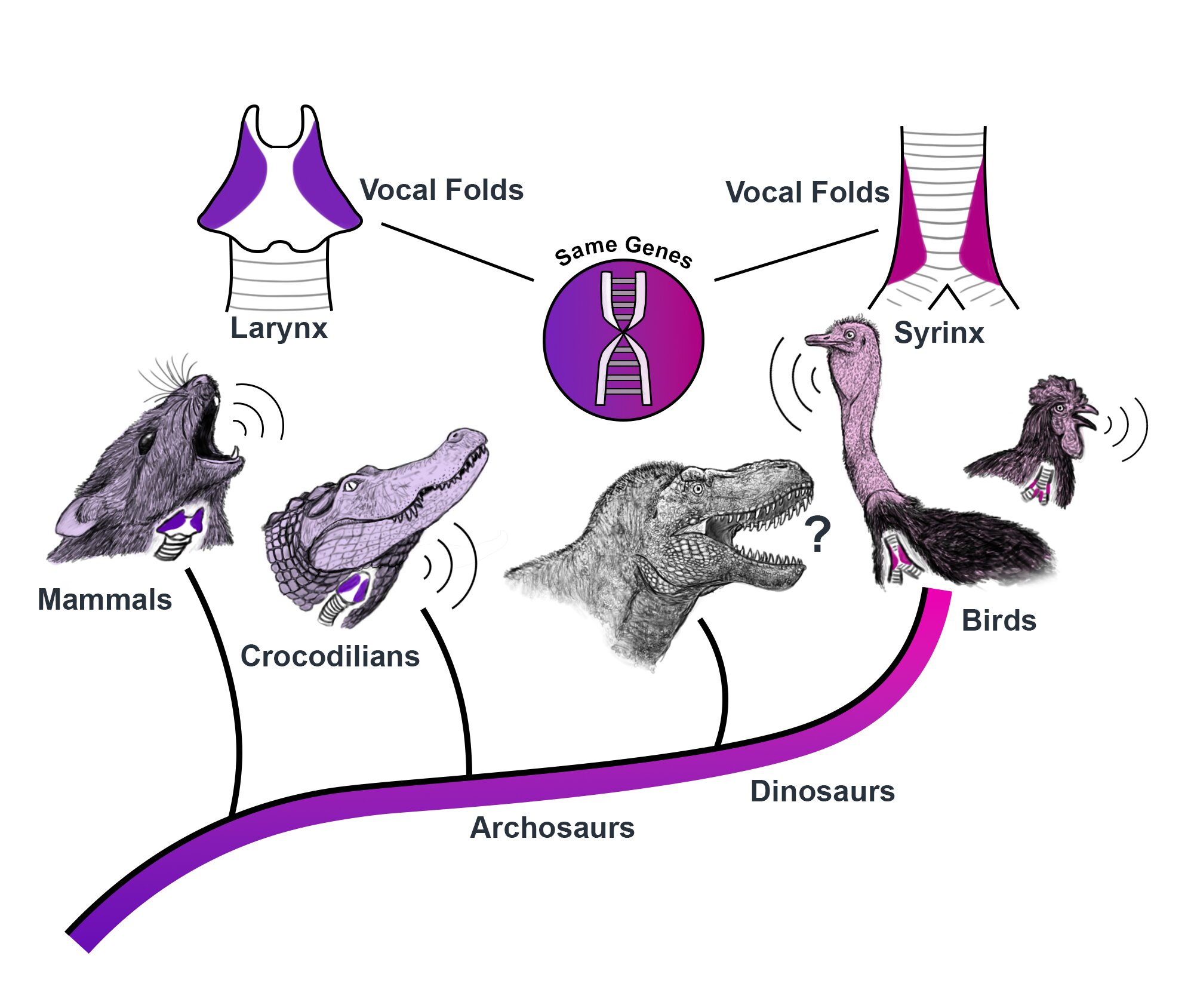Birds and humans: a surprising comparison of vocal organs
Follow us on Google News (click on ☆)

Recent research has revealed a genetic link between the mammalian larynx and the avian syrinx, illustrating the evolution of these vocal organs in diverse animal lineages.
Credit: Michael Chiappone
These studies show that the syrinx and larynx share a common genetic programming, a striking example of "deep homology." According to Professor Julia Clarke, this discovery is on par with the transition from fins to limbs, highlighting an entirely new organ with an ancient common function.
The research, which began in 2013 with the discovery of a fossilized syrinx in Antarctica, unveiled new details about the structure of this organ using innovative preservation and CT scan techniques. Clarke and her team were able to compare the fossilized syrinx with those of modern birds, filling a gap in scientific literature.
Studies conducted on ostriches show that males produce a richer variety of sounds than females, despite having similar syrinx anatomies. These discoveries, made on a farm in Texas, demonstrate how bird behavior influences their vocal repertoire.
As for hummingbirds, their syrinx shares similar structures with those of swifts and nightjars, suggesting that the common ancestor of these birds already had complex vocal folds. This could have facilitated the evolution of vocal learning in hummingbirds, who master sophisticated songs learned from their peers.
A study conducted in collaboration with biologist Clifford Tabin of Harvard revealed that the same genes regulate the development of the larynx and the syrinx, highlighting similar cellular structure and vibratory properties. This in-depth research on genetic expression in 14 bird species indicates that the common ancestor of modern birds possessed a syrinx with two independent sound sources.
Although significant progress has been made, the date of the syrinx's appearance and its presence in non-avian dinosaurs remain unknown. To better understand sound production in dinosaurs, scientists continue to study the vocalizations of current birds and their reptile cousins.